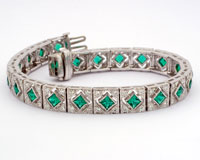Emeralds—And What They Include
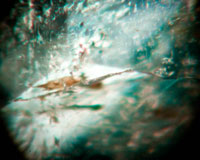
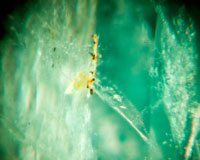 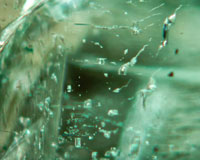 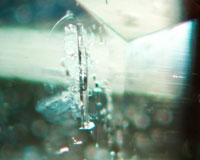 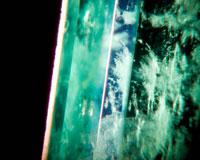  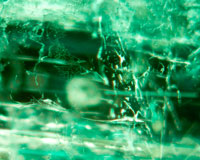 |
Emerald is one of the most popular gemstones and has been for centuries. Emerald is also very likely to include non-gem material in the stone. What those inclusions mean depends on who’s looking—gemologist, consumer, seller or insurer.
Gemologist’s View
Over the millennia of its growth, emerald meets with other minerals and with various geological conditions, each of which leaves distinctive traces in the gem material. Under high magnification, these traces of non-gem material and subterranean events appear as colorful striations, needles, or fibrous lines. They may look like water bubbles frozen in the stone. There seem to be cracks, fissures, splashes and shapes of all kinds. Inclusions in emerald sometimes look so much like rich foliage that gemologists refer to them as a “garden.”
Inclusions are also a life’s record. They give evidence of where the gem material formed and what it encountered in its development.
Edward J. Gübelin, a gemologist who pioneered the study of gem inclusions in the mid-20th century, wrote with a discoverer’s exuberance: “Inclusions in gemstones speak eloquently of the geological origins and subsequent history of their costly host. All we need to do is open our eyes and explore.”
Dealer’s & Seller’s View
What is fascinating and beautiful under a microscope often loses its charm when we behold it with the naked eye. An emerald used in jewelry should be a transparent green. Inclusions in the gem can appear as dark spots, and extremely included emeralds may look cloudy or even opaque, rather than transparent.
Since the most desirable gems are clear, gem dealers have developed several clarity-enhancement techniques. These treatments do not change the gem itself, they simply conceal its flaws. A clarity-enhanced gem is more likely to sell and is able to draw a higher price than it otherwise would.
Consumer’s & Insurer’s View
It’s a given that the consumer wants beautiful jewelry. After that, buyers and insurers of jewelry have similar interests: both want the jewelry to be properly valued.
To be sure that price and valuation are appropriate, both buyer and insurer should know the exact quality of the gem. For emerald, clarity is especially significant.
Clarity Enhancement Treatments
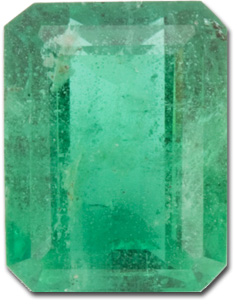 Oiling. The most widely used technique for emerald is oiling, which brings out the gem’s color and diminishes its flaws. It is assumed that emeralds are oiled, and the treatment need not be specifically disclosed.
Oiling. The most widely used technique for emerald is oiling, which brings out the gem’s color and diminishes its flaws. It is assumed that emeralds are oiled, and the treatment need not be specifically disclosed.
Other treatments should be disclosed:
 Fracture filling is an inexpensive treatment widely used on emeralds. To make an inferior gem look clearer and more valuable, technicians fill in any surface-breaking fissures with some other material. Literally thousands of products are used for the filling.
Fracture filling is an inexpensive treatment widely used on emeralds. To make an inferior gem look clearer and more valuable, technicians fill in any surface-breaking fissures with some other material. Literally thousands of products are used for the filling.
Fracture filling makes an emerald look better to the naked eye but, as you can see from the close-up photo, the fractures are still easily seen through a microscope.
Laser drilling. If non-gem material is found in the stone, technicians may use a laser to drill a channel to the inclusion and remove it. Then they fill in the channel.
Some fillers may not be stable. If the filling breaks down, the stone will return to its original unattractive appearance. In some cases, fillers have been know to expand over time, causing the stone to shatter.
Laser-drilling and fracture-filling make the emerald look better (to the naked eye), but they do not improve the stone. They merely conceal its flaws.
If laser-drilling and fracture-filling treatments are not disclosed,
the buyer (or insurer) is deceived into thinking the stone is more valuable than it really is.
For insurers especially, it’s important to be aware that inclusions, whether visible or not, make a gem more liable to damage. Emerald material has a low rating for “toughness”, or resistance to chipping and breaking. This brittleness means emerald can damage from impact, as from a fall.
Excessive inclusions make emerald more vulnerable to damage. Even if they are masked by enhancement treatments, inclusions compromise the gem, allowing it to chip and fracture more easily.
Synthetic Emerald
Chatham Created Emerald Bracelet |
Mined emeralds without inclusions are extremely rare. In fact, a sizeable emerald without flaw would be worth far more than a diamond of similar clarity.
However, emeralds without inclusions can be readily grown in a lab. So synthesized emerald is another response to the desire for attractive, unincluded emerald at an affordable price.
Lab-grown gems are chemically and physically identical to mined gems, yet synthetic gems generally sell for 5-10% of the price of a natural gem. Because of this immense price difference, it is essential that synthesized gems be disclosed on the appraisal.
FOR AGENTS & UNDERWRITERS
Be sure the appraisal states what treatments have been performed on the stone, or explicitly states that the stone is untreated. Untreated emeralds are worth considerably more than treated emeralds.
A JISO 78/79 appraisal, the insurance industry’s standard for detail and accuracy, carries this essential information.
Not every jeweler, nor even every trained gemologist, is competent to appraise emeralds. A reliable appraiser of emerald is a jeweler experienced in the buying and selling of colored gems. The appraiser should be a Graduate Gemologist, preferably a Certified Insurance Appraiser™.
For more discussion of insuring emerald jewelry, see the October 06 issue of JII.
FOR ADJUSTERS
Look carefully at the appraisal and other documents for words like treated, enhanced, fracture-filled and laser-drilled. This is crucial information when pricing a replacement.
Fracture filling is so commonplace in the emerald market that stones NOT so treated are worth considerably more than treated stones. Do not consider an emerald as untreated unless the appraisal specifically states that it is.
Because fracture filling is so common, have all damaged emerald jewelry examined in a gem lab by a Certified Insurance Appraiser™.
Breakdown of a fracture-filling treatment is not considered damage for which the insurer is liable.
It is wise to suspect fracture filling if:
- damage appeared after the jewelry had been cleaned or the stone reset. (Heat or pressure can disturb the fracture-filling treatment.)
- The policyholder’s purchase price seems unusually low for the stated quality of the piece. (She may have gotten “a good deal” because the jewelry was low quality to begin with.)
In nature, fine emeralds with few inclusions are very rare and extremely expensive, while in the lab, attractive, unincluded emeralds can easily be synthesized and sold at affordable prices.
Both mined and lab-grown emeralds are real emerald, but synthesized gems have a much lower market value. Be sure to to distinguish the difference when pricing a replacement.
Terms such as lab-grown, man-made, created, and cultured mean that the emerald is synthesized.
©2000-2025, JCRS Inland Marine Solutions, Inc. All Rights Reserved. www.jcrs.com

